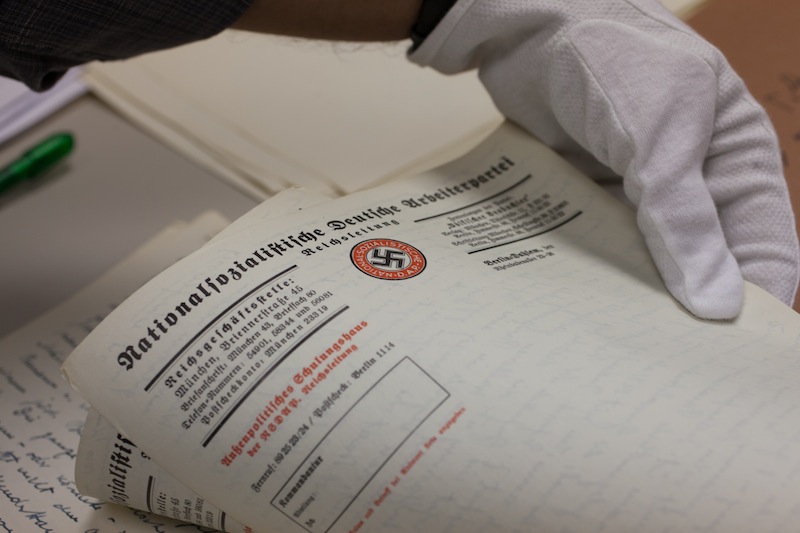Long-Lost Nazi Diary Transferred to Holocaust Museum

Missing for decades, the rediscovered diary of Alfred Rosenberg — a chief Nazi ideologue and one of Adolf Hitler's closest confidants — was officially turned over to the U.S. Holocaust Memorial Museum in Washington, D.C., Tuesday (Dec. 17). And with its new acquisition, the museum has made the German-language diary available online for the first time.
Under Hitler, Rosenberg led the Nazi party's foreign affairs department and served as the Reich Minister for the Occupied Eastern Territories. Historians had long known that Rosenberg's diary existed; it was used as evidence in the Nuremberg trials — in which major political and military leaders in Nazi Germany were tried for war crimes and crimes against humanity — some of the papers were published and parts of the diary are even in the collection of the U.S. National Archives.
But the bulk of manuscript, which is more than 400 pages and covers 1936 through 1944, only resurfaced earlier this year. The papers have been authenticated by the museum, and historians hope that the papers might provide new insights on the politics of the Nazi leaders and the mass murder of the Jewish people. [Images: Missing Nazi Diary Resurfaces]
The German-born American lawyer Robert Kempner, who served as a prosecutor during the Nuremberg trials, brought the diary to the United States. According to the Holocaust Memorial Museum, Kempner had received permission from the Office of the Chief of Counsel of War Crimes to keep unclassified documents "for purposes of writing, lecturing and study" after the trials ended and Rosenberg was hanged in 1946.
Kempner held the documents at his home in Lansdowne, Pa., until his death in 1993. In the years that followed, the Holocaust Memorial Museum hashed out a deal with Kempner's heirs to take ownership of the papers. But some of the documents, including Rosenberg's diary, appeared to be missing, according to the museum.
After an extensive investigation by U.S. Immigration and Customs Enforcement's (ICE) Homeland Security Investigations division, Rosenberg's diary was located and seized at a home in upstate New York earlier this year. The papers had been in the hands of Herbert Richardson, an academic publisher and former professor who had worked for Kempner, according to The New York Times.
The Holocaust Memorial Museum has posted scans of the newly acquired diary pages on its website, with accompanying German transcripts. There is not yet an English translation available, but the museum's catalogue says the diary recounts Rosenberg's meetings with Hitler, political infighting within the Nazi party and bombing raids on Germany, among other topics.
Get the world’s most fascinating discoveries delivered straight to your inbox.
The museum's director, Sara Bloomfield, said the institution tries to get people "to think about why the Holocaust happened and how it was possible in such an advanced society."
"The Rosenberg diary will add to our understanding of the ideas that animated the extremist ideology of Nazism," Bloomfield said in a statement. "We are grateful to our partners at ICE who helped us secure this important piece of history, a significant addition in our urgent efforts to rescue the evidence of the Holocaust."
Follow Megan Gannon on Twitter and Google+. Follow us @livescience, Facebook & Google+. Original article on LiveScience.


